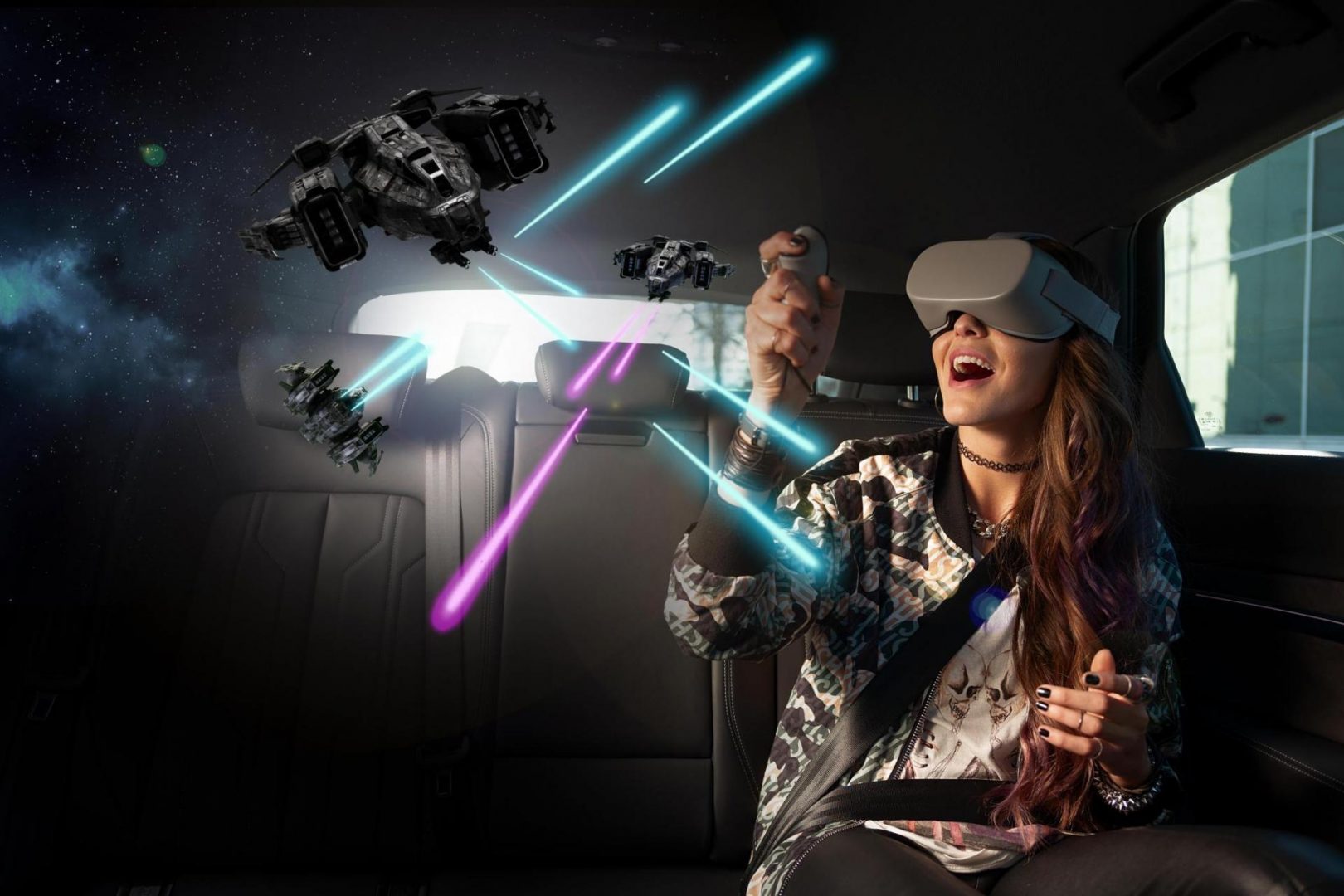Behind the idea of holoride is not only a revolutionary technology, but also the question of how mobility will change in the coming years and what this means for the experience in the car. Our new residents in the House of Innovation show what successful implementation of extended reality content in the field of mobility can look like.
Reality becomes part of the game – how holoride transforms the driving experience into an adventure ride
holoride, a spin-off with a minority shareholding by Audi, transforms vehicles into game parks and provides entertainment and edutainment during the travel season. holoride does this by synchronizing physical vehicle movement and navigation information with enhanced reality environments in real time. Every curve, every acceleration, every braking of the car influences the experience in virtual reality. Even if a user follows the same route every day, he experiences something different under the VR glasses every time. In this way, a completely new media format is created: Elastic Content. As the events in the real environment change, so do the virtual ones.
The technology has its origins at Audi, where it was first developed and presented for the first time at CES 2019 in Las Vegas. The first virtual worlds for the prototype presented at CES were created in cooperation with Disney’s experts for games and interactive experiences. At the IAA in Frankfurt last year, another exciting edutainment use case was presented in cooperation with Porsche and Discovery Channel. This was followed last fall by the world’s first in-car VR experience, freely accessible to the public, on CityWalk LA at Universal Studios in Los Angeles. Together with partners Ford, Universal Pictures and the 3D content studio Rewind, a breathtaking holoride experience based on the Universal Monsters character “Bride of Frankenstein” was created that thrilled the media and was celebrated by passengers.
The fusion of three technologies makes it possible:
- IoT in the linked vehicle,
- AI and
- XR
create virtual worlds by merging vehicle and navigation data.
Derived from algorithms for autonomous driving, the holoride software uses real-time data that provide information about the position, navigation route, speed, and the steering, braking and acceleration behavior of a vehicle (IoT). This data is linked in an intelligent way (AI) with highly immersive display technologies such as virtual, mixed or augmented reality – so-called extended reality (XR). Thanks to an almost exact synchronisation of image and motion, the quality of the experience of the consumed content is massively increased, as the real vehicle movements become part of the virtual experience and the length of the content is based on the expected driving time.
That sounds like enormous hocus-pocus? Yes, a little bit it is!
We recorded relevant data points such as position, speed, steering, acceleration and braking – and associated them with artificial environments. In this way, we have not only created a perfect, motion-synchronized journey through virtual worlds, but also something radically new that entertains rear seat passengers in a way never seen before.
Nils Wollny, co-founder and CEO of holoride since February 1, 2019
Strong immersion – less motion sickness
Travelling with holoride is not only entertainment, but also massively reduces motion sickness. For example, many people can’t read, watch videos or write emails as a passenger in a car without feeling sick. But when the new technology was tested, three times fewer people had problems with motion sickness than would have been expected from their previous history.
This is due to the sensory dissonance caused by staring at a book or screen while the vehicle is moving. The dynamic movements of the car are in contradiction to this. With holoride, on the other hand, the movement in the virtual one remains in harmony with the virtual content through the exact synchronization of the vehicle’s movements, thus creating an immersive experience that does not confuse the sensory impressions and makes the consumption of content possible for people with symptoms of travel sickness.
We are very pleased to have holoride in our innovation ecosystem and on site in addition to TAWNY as Emotion AI experts. We can hardly imagine more suitable neighbours!
Michael Bartl, founder and CEO of HYVE and TAWNY


